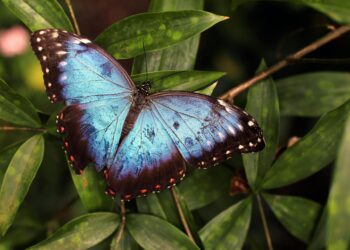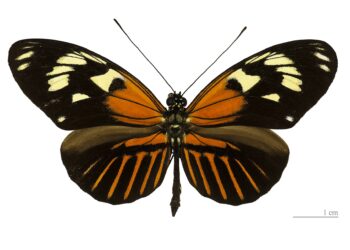It takes some hardcore survival skills to make it to the frozen wastelands of Alaska – and this butterfly has what it takes. Oeneis tanana, or the Tanana Arctic has the ability to produce antifreeze-like substances in its blood to stave off punishing Alaskan temperatures.

It’s the first species discovered in the state in the past 28 years, and may very well be the only endemic butterfly species to Alaska. It was hiding in plain sight, as researchers have probably seen it before several times, but they didn’t recognize it as a new species because it’s so similar to the Chryxus Arctic species.
The butterfly may have emerged as a hybrid between two other species — a very rare process for animals.
“Hybrid species demonstrate that animals evolved in a way that people haven’t really thought about much before, although the phenomenon is fairly well studied in plants,” said Warren, senior collections manager at the McGuire Center for Lepidoptera and Biodiversity at the Florida Museum of Natural History on the UF campus. “Scientists who study plants and fish have suggested that unglaciated parts of ancient Alaska known as Beringia, including the strip of land that once connected Asia and what’s now Alaska, served as a refuge where plants and animals waited out the last ice age and then moved eastward or southward from there. This is potentially a supporting piece of evidence for that.”
Furthermore, its evolution may even shed light on Alaska’s geologic past, especially regarding the events that happened during the last glaciation.
“Scientists who study plants and fish have suggested that unglaciated parts of ancient Alaska known as Beringia, including the strip of land that once connected Asia and what’s now Alaska, served as a refuge where plants and animals waited out the last ice age and then moved eastward or southward from there,” Warren explained. “This is potentially a supporting piece of evidence for that.”
However, in order to prove this theory, they first need to conduct genetic studies on the butterfly.
“Once we sequence the genome, we’ll be able to say whether any special traits helped the butterfly survive in harsh environments,” he said. “This study is just the first of what will undoubtedly be many on this cool butterfly.”
For now, Warren wants to return to Alaska, hoping to find out new clues about the butterfly, and perhaps even more species.
“New butterflies are not discovered very often in the U.S. because our fauna is relatively well-known,” Warren said. “There are around 825 species recorded from the U.S. and Canada. But with the complex geography in the western U.S., there are still going to be some surprises.”






